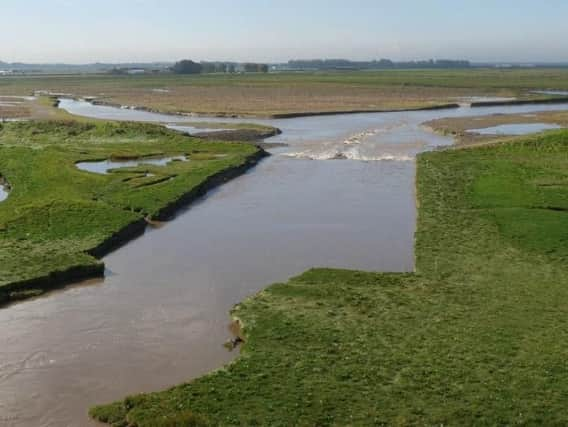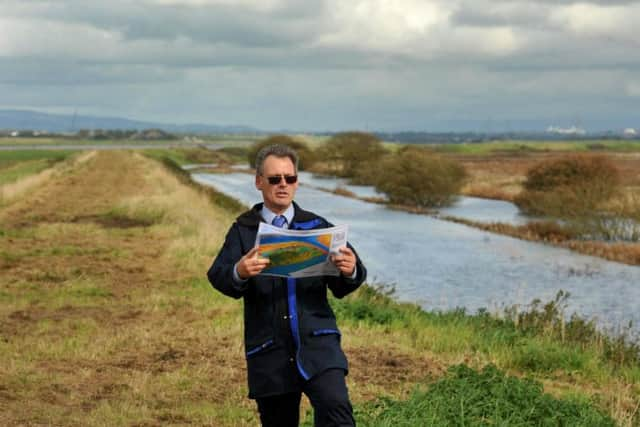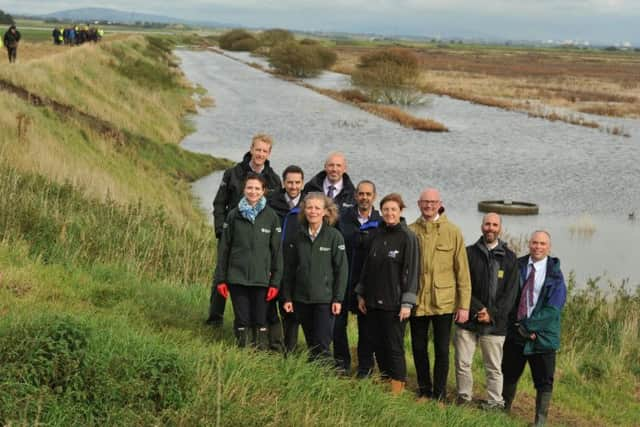The £6m hidden gem of nature reserves


A marginal land, a flat, watery land, a silver sun filtering down on the gentle grey of the River Ribble.
It is easily overlooked.
But here in the Ribble Estuary something significant has occurred thanks to teamwork and tenacity which may have benefits for decades to come – for wildlife and for people living under the threat of flooding as our climate changes.


Advertisement
Hide AdAdvertisement
Hide AdFor at Hesketh Out Marsh on the south bank of the river directly opposite to BAE Systems mighty Warton aircraft plant is a new nature reserve.
The scheme, costing around £6m, has been completed thanks to a co-ordinated effort from Natural England, the Environment Agency, the RSPB and local residents and farmers with the money flooding in from the Landfill Communities Fund and the Government.
Many people will know of the RSPB visitor centre at Granny’s Bay at Fairhaven and some will have visited its Marshside site near Southport, but the Hesketh Bank salt marshes get relatively few visitors.
But that could change with the opening up of the eastern part of the site this autumn to the sea, by breaching the old, weak, sea wall to let the tide in, a vital habitat is being created and, paradoxically, sea defences are being improved to protect more than 140 Lancashire homes from flooding.


Advertisement
Hide AdAdvertisement
Hide AdAccess to the site is down an obscure single track lane thrusting out across the fertile farmland where so many Lancashire potatoes and Tarleton tomatoes are grown.Dib Road is easily missed, but to those in the know, mainly locals and birdwatchers, it is a willow bordered path to peace and tranquillity.
The west side of the salt marshes was opened to the sea 10 years ago and the area has developed into an important nature reserve as the tide ebbs and flows into the salty lagoons and creeks so many birds rely on.
In fact the Ribble Estuary is the second most important site in the country for waders and wildfowl, so important that it is recognised as such across Europe.
Tony Baker, the RSPB’s Ribble area manager, said: “The area is warm in winter, it’s wet and it has tonnes of lovely mud. It is home to a quarter of a million birds at any one time.“There are 16 species here that are recognised as being in internationally important numbers.


“It is of world importance.”
Advertisement
Hide AdAdvertisement
Hide AdHe said migrating birds use it as a “motorway service station” to feed and rest on their epic journeys.
At this time of year, morning commuters will start to see the skeins of pink footed geese flying in from the arctic. The V-shaped formations in the sky and the curious gabbling and honking sound on the misty Autumn air is a sure sign that winter is coming.
“A quarter of the world’s population of pink footed geese winter here.”


“We have many ducks such as teal and wigeon, we have dunlin, knot, oyster catchers, we have black godwit here where there is mud and bar-tailed godwit up near Lytham where they prefer the sand and we have sanderling.”
Advertisement
Hide AdAdvertisement
Hide AdThe latter have one of the longest migrations of any bird – from Greenland to South Africa – using Lancashire’s coast as a vital pit-stop on the way.
Without the Ribble Estuary these birds would struggle to exist in their native countries.
The waders attract other more spectacular birds for people to spot.
“We get the birds of prey here at the estuary, peregrine falcons, harriers, merlin and lots of owls, barn owls and short-eared owls.”In summer the air is filled with the sound of skylarks.
Advertisement
Hide AdAdvertisement
Hide AdBut Hesketh Out Marsh is not just for the birds. The project is for people too.
Mike Burke, area manger from Natural England, said: “We have reclaimed around 150 hectares of salt marsh in addition to the 150 we created in the first phase 10 years ago.“That’s great for the wildlife as salt marsh is in serious decline in the UK, but what’s just as important, it’s great for people too.
“The people of Blackpool, Preston, Southport and across Lancashire will be able to come here to the beating heart of the county’s nature reserves. It is a true hidden gem.“Getting out to explore the countryside is good for exercise and mental well-being. There is a series of footpaths and view points.
“Its a peaceful landscape, you get a little solitude and tranquility here. Find yourself some space to think. You can hear bird song you can’t hear anywhere else.”
Advertisement
Hide AdAdvertisement
Hide AdJim Walker, from the Environment Agency, explained how the scheme benefits people in another way. The old 1.5m high sea wall has been breached in four places and a new barrier constructed 2.5m high and wider. It will protect 143 homes at risk from flooding as the sea levels rise due to global warming.
He said: “The old embankment was breached by the sea in 1977 and hundreds of properties were flooded, this should give us protection up to a once in 200 year flooding event.“The salt marshes on the other side of the embankment will provide space for the water and take the energy out of the waves.
“In the past here, in Lancashire we have repeatedly pushed the sea back to create land for agriculture. This is just coming full circle. There will have to be more of this sort of re-alignment of our coast in the future to cope with global warming.”
He said tough choices might have to be made as sea levels rise and weather becomes more extreme, but this project was an easy choice and delivered at two thirds of the cost of other coastal protection schemes thanks to teamwork and the use of mud from the salt marsh to create the embankment as it was dug out to create ponds and lagoons for the birds.
Advertisement
Hide AdAdvertisement
Hide AdWith the addition of the latest piece in the jigsaw, the often overlooked Ribble Estuary is already England’s third largest National Nature Reserve.
Natural England’s Chairman, Andrew Sells, said: “Uniting these two areas on the Ribble will create wonderful new habitat, reduce the risk of flooding and enhance the area’s appeal to wildlife.
“It is also an extremely symbolic moment, demonstrating how conservation will work in the future. Bringing together organisations and the community.”